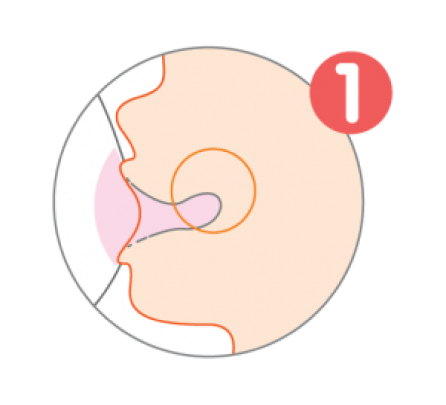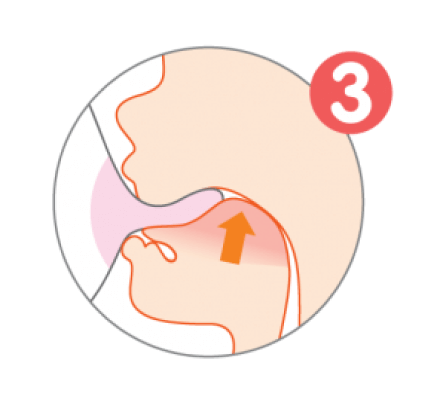
Have your baby latch on comfortably and breastfeed easily
Usually, mothers have to breastfeed their babies for around 8-10 times a day and the duration for each feed is around 10-30 minutes. Mothers can get tired and stressful so it is important for them to feed their babies in a comfortable and relaxed position so that they can continue.
It is important to hold the baby in an appropriate position for both the mother and the baby. It will help reduce risks and problems. Moreover, it will allow the baby to drink effectively and help reduce the stress on the mother’s breasts. Here are some specific baby breastfeeding tips.
Help your baby in latching on to your nipple
Latching on means the baby attaching to the nipple or breast in order to breastfeed. It is important to make sure that the positioning is proper for the baby to be able to latch on easily and get enough milk.
Firstly, have a look at the way a baby latches on to the mother’s breast and how the baby is breastfed.
The baby’s mouth and tongue movement when he breastfeeds is different from an adult’s movement when he drinks. It is called peristaltic movement which is derived from sucking reflex movement.
A new born baby has a specific round dent right in the centre of his upper jaw. This appears for a certain time to assist the baby in breastfeeding. The mother’s nipple is strongly held between the dent and the fat layer of the cheek. The fossa disappears as soon as the baby stops breastfeeding.
Negative pressure is caused by the peristaltic movement which pulls the milk out of the nipple.
The tongue movement is similar to a wave movement passing from the tip of the tongue towards the root in around 0.7 seconds.
The New-born Infant’s Sucking Reflex
This special muscle contraction in infants was first explained using an intraoral camera by Pigeon. This movement by infants was revealed in 1988 by professor Kazuko Eishima by filming inside the mouth using his intraoral camera while the babies were sucking.

It is important to assist your baby in latching on properly to take full advantage of the peristaltic movement that is uniquely made for breastfeeding.
Position the baby in a way that the baby’s nose faces the nipple and the lower jaw is touching the bottom part of the areola.
Touch the baby’s lips on the areola or the nipple to initiate the searching reflex in the baby. Wait for the baby to open the mouth and then move the baby close to the nipple.
First, the part that enters first in the baby’s mouth is the areola that is touching the baby’s lower jaw. Make sure the baby is latched on to the nipple firmly.


It is important to assist your baby in latching on properly to take full advantage of the peristaltic movement that is uniquely made for breastfeeding.
Position the baby in a way that the baby’s nose faces the nipple and the lower jaw is touching the bottom part of the areola.

